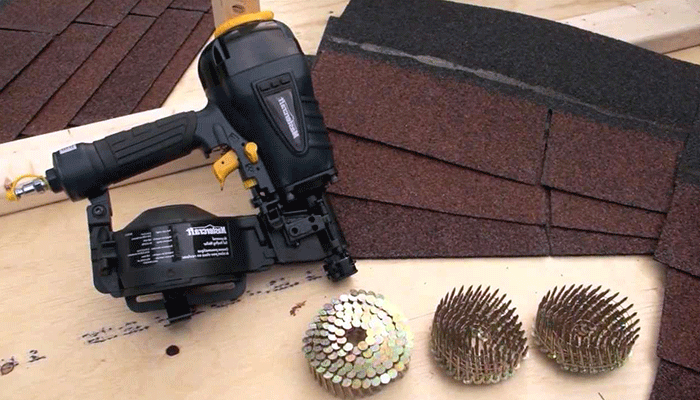When you are installing or repairing the roof of your house, there might come a moment when you need to use the siding nails. But you may have only a roofing nailer to do the job. So can you use siding nails in a roofing nailer?
Though maximum Roofing Nailers do not support siding nails, there are some which can use siding nails. The answer depends on the size of the nails you are using and the features (eg. the maximum size of nails it can accept) of your roofing nailer.
In this article, you will find all the details to use siding nails ina roofing nailer. Let’s start exploring.
Can You Use Siding Nails In A Roofing Nailer?
Choosing the correct fastener and the right nailer for any job is vitally crucial. Now, if you do not want to think about the right choice for your nailer, you can use siding nails in a roofing nailer.
If you intend to fit siding nails (as for example:1-3/4″ galvanized nails) in a roofing nailer, then you should blind nail these. Since the siding nails have smaller heads, it has a ring shank where the whole nail gets inside the hardwood flooring board and no part of it remains above the surface.
Blind nailing involves driving a nail into the hardwood flooring board at a 45-degree angle, just above its tongue, and driving it into the subfloor or beam.
As the name suggests, when you blind nail them, the nail head won’t be visible at all.

Roofing Nailer And Siding Nails
Nailing roofs is the primary purpose of roof nailers, which implies they are meant to drive nails into fiberglass or asphalt . As a result, roofing nails come with a smooth shank and a larger head, which helps keep the shingles flush on the roof.
Nails used for siding are longer than those used for roofing because they have to support more weight. The heads of these screws are tiny and have ringed shanks that hold the wood better because they’re not intended to be removed.
How Can You Use Siding Nails In A Roofing Nailer
In order to avoid seeing the heads of the nails, you have to blind nail. Overhanging nails are connected to the surface of the skin.
If you’re going to nail them (leaving the nail heads exposed), It is recommended to use a siding nailer that accepts smaller (and longer) nails.
Step 1
At first, open the feeder door of your nailer and then open the magazine door. To expose the whole nail feed channel, they are usually opened in opposing directions.
Step 2
Next, remember to check for any retainers or rubber bands that may be attached to the nail coil and remove them before you start.
Step 3
Afterwards, put the coil, with the nails pointing downward, in the canister. Unwrap only the very end of the coil so that the first nail may be placed in the barrel.
Step 4
Nails should be placed in the appropriate firing position by raising and lowering the plastic “floor” (which is frequently done by spinning it).
Step 5
Lastly, close both the feeder and the magazine door.
Outcome and Analysis
If you use your roofing nailer to use siding nails, you might face some problems.
One of which is, when you shoot your sliding nails out of your roofing nailer into a hardwood flooring board, there might have been some movement in the hardwood flooring board you are putting the nails in.
Later on, you can see that those nails (which cause the movement of the hardwood flooring board) are sticking out from the hardwood flooring board.
Though here happens shooting a nail from the nailer that does not intend for it, the overall performance was pretty good.
Verdict
In conclusion, you’ve already got the answer of can you use siding nails in a roofing nailer.
Although in some cases, you can use the siding nails in a roofing nailer. But then again if you use your roofing nailer to use both roofing and siding nails, then there would not be two types of nailers for your everyday tasks.
That’s why it is suggested that you only use the nails that your goods are meant for if you want to accomplish your work successfully. Because we do not want to cause any harm to the tools that we work with.





